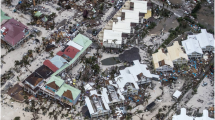Abstract
A roof is a part of a building which provides us protection from animals, weather, notably rain or snow and admits light if a skylight is present. The different types of roofs are gable roof, hip roof, sawtooth roof, etc., and the materials used in the roofs include grass, ceramics, Teflon, etc. Opening is the intentional introduction of ambient air into a space, and it is mainly used to control indoor air quality by diluting and displacing indoor pollutants; it can also be used for purposes of thermal comfort or dehumidification. Modern trends of roofs are now available with different modern and cheap materials with openings. This paper discusses the numerical and physical models developed for the design of different asymmetric membrane roofs and thus comparing the results of the models with those of the various models and their analysis. Generally, the shapes considered are conoid shape, saddle shape, and elliptical dome shape with one or more openings. The materials adopted for asymmetric membrane roofs are modern textile material, i.e., polytetrafluoroethylene, synthetic rubber, i.e., ethylene–propylene–diene–terpolymer and polyvinyl chloride (PVC). This initially outlines procedures for stress analysis, wind pressure analysis, and seismic analysis. Finally, construction of the actual membrane is described, and comparison is made. Determination of the mechanical properties of the fabrics used to construct the asymmetric membrane roofs which are also briefly discussed.
Access this chapter
Tax calculation will be finalised at checkout
Purchases are for personal use only
Similar content being viewed by others
References
Rizzo F, Ricciardelli F (2017) Design pressure coefficients for circular and elliptical plan structures with hyperbolic paraboloid roof. Eng Struct 139(2017):153–169
Rizzo F, D’Asdia P, Lazzari M (2017) Aerodynamic behavior of hyperbolic paraboloid shaped roofs: wind tunnel tests
Holmes JD, Ginger JD (2012) Internal pressures–The dominant windward opening case—a review. J Wind Eng Ind Aerodyn 100(2012):70–76
Xu H, Lou W (2016) Wind-Induced internal pressures in building with dominant opening on hemi-ellipsoidal roof. J Struct Eng 142(7):1–10. https://doi.org/10.1061/(ASCE)EM.1943-7889.0001468
Guha1 TK, Sharma RN, Richards PJ (2014) Dynamic wind load on an internal partition wall inside a compartmentalized building with an external dominant opening. J Struct Eng https://doi.org/10.1061/(ASCE)AE.1943-5568.0000113
Tecle AS, Bitsuamlak GT, Chowdhury AG (2010) Opening and compartmentalization effects of internal pressure in low-rise buildings with gable and hip roofs. J Struct Eng https://doi.org/10.1061/(ASCE)AE.1943-5568.0000101
Wang YJ, Li QS (2015) Wind pressure characteristics of a low-rise building with various openings on a roof corner. J Wind Struct 21(1):1–23. https://doi.org/10.12989/was.2015.21.1.001
Guha TK, Sharma RN, Richards PJ (2015) Internal pressure in a building with a single dominant opening: an experimental and numerical case study. Wind Eng 156. https://doi.org/10.3850/978-981-07-8012-8
Karava P, Stathopoulos T (2009) Wind-induced internal pressures in buildings with large facade openings. In: Proceedings of the 11th americas conference on wind engineering, American association for wind engineering, Fort Collins, CO
Prevatt DO, Cui B, (2010) Wind tunnel studies on sawtooth and monosloped roofs. J Struct Eng 136(9):1161–1171. https://doi.org/10.1061/(ASCES)T.1943-541X.0000200
Pan F, Cai CS, Zhang W (2013) Wind-Induced internal pressures of buildings with multiple openings. J Eng Mech 139(3):376–385. https://doi.org/10.1061/(ASCE)EM.1943-7889.0000464
Chowdhury AG, Canino I, Mirmiran A, Suksawang N, Baheru T (2013) Wind-Loading effects on roof-to-wall connections of timber residential buildings. J Eng Mech 139(3):386–395. https://doi.org/10.1061/(ASCE)EM.1943-7889.0000512
Wang J, Cao S, Pang W, Cao J (2018) Experimental study on tornado-induced wind pressures on a cubic building with openings. J Struct Eng 144(2):04017206. https://doi.org/10.1061/(ASCE)ST.1943-541X.0001952
Ginger JD, Holmes JD, Kim PY (2010) Variation of internal pressure with varying sizes of dominant openings and volumes. J Struct Eng 136(10):1319–1326. https://doi.org/10.1061/ASCEST.1943-541X.0000225
Amin JA, Ahuja AK (2013) Effects of side ratio on wind-induced pressure distribution on rectangular buildings. J Struct 2013:12, Article ID 176739. http://doi.org/10.1155/2013/176739
Author information
Authors and Affiliations
Corresponding author
Editor information
Editors and Affiliations
Rights and permissions
Copyright information
© 2021 Springer Nature Singapore Pte Ltd.
About this paper
Cite this paper
Abraham, G.M., Nizar, R. (2021). Analysis of Various Asymmetric Membrane Roofs with Opening(s). In: Gupta, L.M., Ray, M.R., Labhasetwar, P.K. (eds) Advances in Civil Engineering and Infrastructural Development. Lecture Notes in Civil Engineering, vol 87. Springer, Singapore. https://doi.org/10.1007/978-981-15-6463-5_13
Download citation
DOI: https://doi.org/10.1007/978-981-15-6463-5_13
Published:
Publisher Name: Springer, Singapore
Print ISBN: 978-981-15-6462-8
Online ISBN: 978-981-15-6463-5
eBook Packages: EngineeringEngineering (R0)




